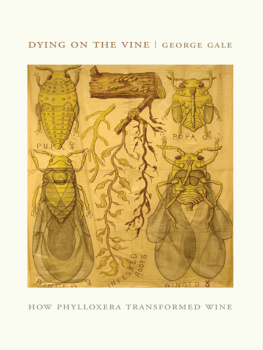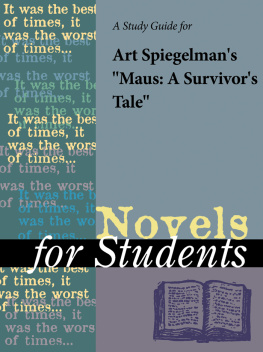TABLE OF CONTENTS
Guide
Novels for Students, Volume 43
Project Editor: Sara Constantakis
Rights Acquisition and Management: Robyn Young
Composition: Evi Abou-El-Seoud
Manufacturing: Rhonda Dover
Imaging: John Watkins
Product Design: Pamela A. E. Galbreath, Jennifer Wahi
Digital Content Production: Allie Semperger
Product Manager: Meggin Condino
2013 Gale, Cengage Learning
ALL RIGHTS RESERVED. No part of this work covered by the copyright herein may be reproduced, transmitted, stored, or used in any form or by any means graphic, electronic, or mechanical, including but not limited to photocopying, recording, scanning, digitizing, taping, Web distribution, information networks, or information storage and retrieval systems, except as permitted under Section 107 or 108 of the 1976 United States Copyright Act, without the prior written permission of the publisher.
Since this page cannot legibly accommodate all copyright notices, the acknowledgments constitute an extension of the copyright notice.
For product information and technology assistance, contact us at Gale Customer Support, 1-800-877-4253.
For permission to use material from this text or product, submit all requests online at www.cengage.com/permissions.
Further permissions questions can be e-mailed to permissionrequest@cengage.com
While every effort has been made to ensure the reliability of the information presented in this publication, Gale, a part of Cengage Learning, does not guarantee the accuracy of the data contained herein. Gale accepts no payment for listing; and inclusion in the publication of any organization, agency, institution, publication, service, or individual does not imply endorsement of the editors or publisher. Errors brought to the attention of the publisher and verified to the satisfaction of the publisher will be corrected in future editions.
Gale
27500 Drake Rd.
Farmington Hills, MI, 48331-3535
ISBN-13: 978-1-4144-9486-9
ISBN-10: 1-4144-9486-6
ISSN 1094-3552
This title is also available as an e-book.
ISBN-13: 978-1-4144-9272-8
ISBN-10: 1-4144-9272-3
Contact your Gale, a part of Cengage Learning sales representative for ordering information.
Printed in Mexico
1 2 3 4 5 6 7 17 16 15 14 13
My Jim
Nancy Rawles
2005
Introduction
Nancy Rawles's My Jim (2005) is about a woman, Sadie, who was born into slavery in Missouri. Throughout the book she relates the story of her life to a granddaughter who was born after the Civil War and has no idea of the kind of life that her people were forced to live so recently in the past. Speaking in the voice of an uneducated but passionate woman of her time, Sadie recounts the beatings and maiming, the separation of families as some members were sold away and never heard from again, and the forced pregnancies that gave the slave owners a fresh supply of human beings to sell. As she tells her story, Sadie and her granddaughter work on sewing a memory quilt, incorporating into it what few items she was able to keep as her own in a system that forbade slaves to own anything, as well as patterns of fabric that serve as symbolic reminders of people Sadie has known.
The most significant of these people, the Jim of the novel's title, was already familiar to generations of readers before this book was published: he is the slave who runs away from Hannibal, Missouri, with Huckleberry Finn in Mark Twain's famous 1884 novel, which is often considered one of the greatest works of American literature. Sadie is present at Jim's birth, and he is her one true love, her first husband, and the father of her first children. Characters and events from Twain's book weave through My Jim, though the focus of the story is always on Sadie and her struggle to survive. Readers should be aware that this book describes, though not graphically, the atrocities inflicted upon slaves during that period, including numerous instances of rape. There is frequent use of a derogatory label used against blacks, a precedented stylistic choice that has sometimes gotten Adventures of Huckleberry Finn placed on lists of unacceptable books, though Rawles explains in Sadie's own voice the context in which such racial epithets are used.
Author Biography
Rawles was born in 1958 and grew up in Los Angeles. She majored in history at Northwestern University, where she received her bachelor of science degree from the Medill School of Journalism. Remaining in Chicago after graduation, she worked as a journalist for various publications, including the Chicago Reporter, and also studied playwriting, having several plays produced. In 2000, her play Keeper at the Gate, about the assassination of Seattle Urban League director Edwin T. Pratt, won the King County Arts Commission Publication Award.
Rawles's first novel, Love Like Gumbo, published in 1997, is about Grace Broussard, a woman whose family is loving and complex. It is set in South Central Los Angeles in the 1970s, an area Rawles was familiar with, and it won her the Before Columbus Foundation American Book Award and a Washington State Governor's Writers Award. Her second novel, Crawfish Dreams, published in 2003, is about Grace's mother, Camille, and her history in Los Angeles as the town changes over the decades. Crawfish Dreams was included in the Barnes & Noble Discover Great New Writers Program. My Jim, published in 2005, won Rawles an American Library Association Alex Award, honoring books written for adults but having special appeal for teens, and was the 2009 selection for the Seattle Reads program.
Plot Summary
Part One: Marianne Libre
JAR
The novel begins decades after most of the events it describes took place. It is the year 1884, and Marianne Libre, a young woman living in the South, has been given a proposal of marriage by her boyfriend, Chas Freeman, who is being called up for military service in the army at Fort Robinson, Nebraska. She is uncertain about whether or not to accept. Being only sixteen years old, she does not know if her feelings for Chas are true love or if she will regret tying herself down to him.
Marianne consults with her grandmother, Sadie Watson, to ask what she should do. Marianne makes the case that she is young and that life might have more to offer, but Sadie, who lived most of her life in slavery, thinks that a girl who has a chance at a stable life with a good provider should take it.
During their discussion, it comes up that Sadie might soon be evicted from her cabin. She once wanted to leave Louisiana, but now she is accustomed to it. Even in her old age, though, there is no stability in the life of a black woman. She recalls Marianne's mother, who left the eight-year-old with Sadie when she ran away to the West after the Civil War.
Media Adaptations
- An unabridged audio version of My Jim was released on compact disc in 2008 by Recorded Books, read by Lizzie Cooper Davis and Brenda Pressley.























